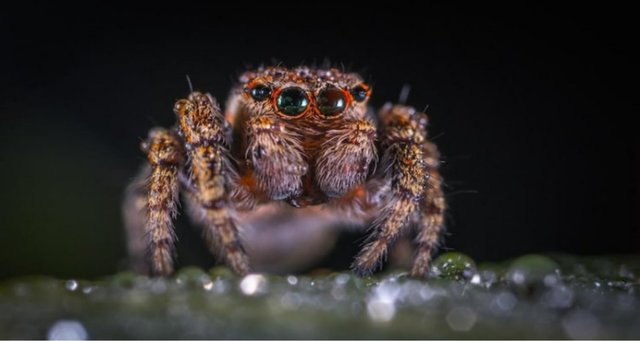Scientists are turning dead spiders into robots, are they dead? Will things start moving in the labs now?

Spiders have a hydraulic pressure system in their body, which controls their legs. Representational photo (Unsplash)
Dead spiders suddenly started acting like robots, it may sound like a part of a science fiction movie, but scientists have proved it to be true. Dead spiders will now be seen lifting delicate items in science labs, which are not easy to lift with the help of other tools. In the language of science, this is necrotics, that is, making robotic things from dead bodies.
The idea of making a robotic device from a dead spider did not come for no reason, but there were many reasons for it. As it is biodegradable, that means it gets mixed in the soil without harming the environment. Second, as a gripper, spiders are able to do a great job. A dead spider can also lift about 130 times its own weight. It can act as a robotic arm. But experts didn't think of so many benefits all of a sudden, rather it started by chance.
In the year 2019, in the lab of America's Rice University, scientists caught sight of a spider. When he noticed, he found that all the spiders are seen in the same position after death. Their legs are seen sticking together. Why are they like this?
In the research, it was found that there is a hydraulic pressure system in the body of spiders, which controls their organs. In this, a kind of liquid comes out from their body which spreads the legs out. Also, unlike humans or most animals, they have flexor muscles. These are those muscles, which keep two bones connected in a way. In easy language, it can also be understood that there are flexor muscles around our knee or elbow, so that they can bend easily.
With the help of these muscles, the spider contracts its legs inwards and hydraulic pressure helps them to spread outwards. When the spider dies, the hydraulic pressure in them ends, which means that the liquid cannot come out, due to which the pressure can be created and the legs can spread out. Due to this the feet remain shrunk inwards.
Scientists found this system very useful. If they can use the Spyder in their lab, then many such things can be lifted, which are prone to wear and tear with other tools. But how to work with a dead spider! Now he put a needle in his hydraulic chamber and filled it with air, due to which the legs started opening outwards.
The result of this seemingly simple experiment was spectacular. It was found that even a dead spider can lift 130 times its own weight and this can happen in more than a thousand cycles. However, after this experiment with spiders without coating, they could not last long. Then the scientists put a layer of wax on the spider and showed that it makes them last longer.
The spider's delicate legs could do many things in the lab, such as assembling microelectronics or collecting specimens. Small tools are usually made for these works, which are of no use soon. It becomes junk, which is increasing global warming. On the other hand, there is no fear of using a dead spider as a robot. It is biodegradable which ends up mixing in the soil.
This research of Rice University was called Necrobotics. Since the publication of the report titled Necrobiotics - Biotic Materials as Ready to Use Actuators in Advanced Science, it is expected that the practice of necrobiotics in the lab will increase in the future.
A major advantage of necrobotics is also being told that they can work continuously like robots and for this they will not need to be power-on or plug-in. Especially in the case of the spider, it acts like a gripper, which is currently being done by robots. This also requires microdesigning, whereas spiders are naturally able to act as grippers.
Even before this, insect-robotic projects have been done, but they were not very successful. Like putting electrodes in the brain of a cockroach and getting them to work. This was being done with live cockroaches, on which a fraternity of scientists themselves objected. This is no longer a threat with Necrobiotics.